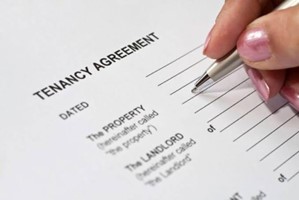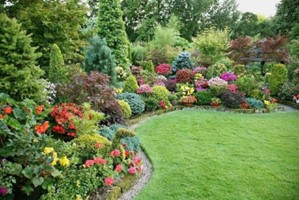Many believe owning rental property is a simple way to make money. However, any landlord understands how much time and money goes into advertising, filling, and maintaining a rental property. Aside from keeping the property desirable and functional, a property owner or management must follow laws and pay taxes. And, if the rental agreement includes extras like garden maintenance, providing those takes time, money, or both.
When it comes to gardening, landlords and tenants frequently disagree on what is and is not permitted on the rental property. While tenants may desire to set up a garden and reap the benefits, such as growing their own food and making the space more homelike, landlords may object. Landlords are primarily concerned with preserving their investment, including a garden, from damage and changes.
Low-maintenance landscaping should be a priority, whether you do it yourself, hire a landscaping or yard maintenance company, or your rental leasing agreement requires your tenants to care for the garden. Whether you have a balcony, windowsill, or a small patch of soil, these alternative methods will empower you to cultivate a beautiful garden, effortlessly enhancing your rental living space.
Should Landlords Allow Plants in Their Rental?
Allowing plants in rental properties can be a win-win situation for landlords and tenants. Greenery improves the property’s aesthetic appeal, potentially attracting more renters and creating a positive living environment. Indoor plants have been shown to improve air quality and produce a tranquil environment, which can increase tenant satisfaction.
However, there may be concerns about potential plant damage or neglect. Landlords could establish guidelines such as limiting the number and size of plants or clarifying who is responsible for their care. Clear communication and collaboration between landlords and tenants may foster a mutually beneficial approach to incorporating plants into rental property.
Allowing plants in rentals ultimately demonstrates a progressive mindset that values well-being and environmental consciousness. Property owners can encourage a peaceful coexistence of nature and living spaces within their rental properties by balancing aesthetics and practicality.
Establishing Tenant’s Tenancy Agreement

1. Creating Agreeable Terms
Creating a lease agreement for a tenant entails specifying terms that enable an excellent landlord-tenant relationship. You should provide specific rent details, such as the amount, due date, and acceptable payment methods. Also, outline maintenance obligations, clarifying if the tenant or landlord is responsible for specific activities. Bay Property Management Group Northern Virginia offers a comprehensive rental agreement.
Clearly state the lease’s duration and renewal requirements. Include provisions for security deposits that specify the amount and terms of return. If applicable, specify rules for subletting and create guidelines for appropriate conduct on the property. Make sure that all parties are aware of any penalties or consequences for breaching the agreement. A clear and agreeable lease agreement is the foundation for a positive and mutually respectful living arrangement.
2. Landscaping Changes as Violations
To minimize any violations, it’s critical to establish guidelines regarding landscape changes in a tenant’s leasing agreement. Declare explicitly that significant changes to the landscaping, such as removing or planting trees, modifying existing gardens, or altering outside structures without prior consent, are violations.
Specify the approval process, ensuring tenants communicate proposed changes in writing before implementation. Outline the consequences of unauthorized landscape changes, including penalties or restoration fees. This proactive approach maintains the property’s aesthetics and creates a transparent framework for tenant-landlord cooperation, encouraging a peaceful living environment.
Top 3 Alternative Ways to Start Low-Maintenance Gardening
1. Container Garden
Container gardens are exactly what they sound like: fruits and vegetables cultivated in huge containers. Flowers and food can be housed in various containers such as tubs, pots, barrels, and more. Container gardening is ideal for a small yard, balcony, or rental property, as it is never permanent but can satisfy a tenant’s desire for a garden.
Allow containers along the sunny side of the yard along the fence, or agree to put a window box or hanging basket with the tenant. Container plants, in the right arrangement, can improve the property’s curb appeal and satisfy your tenant without requiring too many permanent improvements.
2. Flower Bed Garden
Consider allowing the tenant to use flower beds near the property or in the yard as a garden if the rental property has them. Because they are already part of the landscape, it doesn’t require much work for the tenant to prepare the ground for planting. Even if you currently have flowers or bushes there, you could allow the tenant to utilize the space in between, or you could postpone planting flowers to provide the tenant with that space.
However, it’s not difficult to reclaim that space for flowers once the tenant has left. If you don’t want to dedicate all of your flowerbed space to a tenant’s garden, try allocating at least a little space.
3. Vertical Gardening
Vertical gardening is a top low-maintenance alternative, providing a space-efficient and visually appealing method. Install wall-mounted planters, vertical garden towers, or hanging pots to use vertical space. These arrangements maximize space and simplify maintenance by making watering and upkeep more accessible.
Choose low-maintenance plants that grow in vertical environments, such as succulents, herbs, or hardy perennials. Vertical gardening offers a decorative touch and allows renters to enjoy a green oasis without wasting valuable floor space. Embrace the vertical dimension and watch your low-maintenance landscape flourish in flair and simplicity.
Final Thoughts
Embracing low-maintenance gardening in a rental home opens up a world of possibilities for nature lovers and those with busy lifestyles. Renters can nurture green havens without compromising flexibility by exploring options such as container gardening, vertical gardening, and flower beds. These methods reduce the impact on the property and create a connection with nature.
Drought-resistant plants, self-watering systems, and strategic placement of garden elements promote long-term sustainability and ease of care. Finally, the journey into low-maintenance gardening turns a temporary living area into a flourishing, personalized space that fits the rhythm of modern, on-the-go lifestyles.

